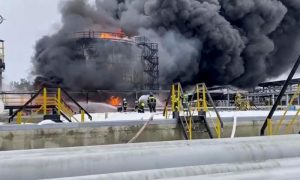Energy Transition Framework
At the beginning of the third decade of the 21st century, the oil and gas industry faces opposition from a public very concerned about the environmental impact of fossil fuels, more and more skeptical shareholders, and opposition from managers who are making policies and who are attempting to concurrently meet decarbonization targets and expected oil and gas.
Demand for gas
In the midst of the global energy transition, the demand, financial and social future of oil and gas companies is increasingly being questioned. Despite these obstacles, however, oil and gas remain an important part of the energy mix, especially in developing regions. The International Energy Agency’s Sustainable Development Scenario (SDS) and the Shell Sky Scenario – both aggressive decarbonisation forecasts – show a continued long-term role for oil and gas, even as demand levels decline from today.
US, India, China – 3 Largest Greenhouse Gas Producers
In the United States, India and China – the three largest greenhouse gas producers – natural gas in particular has the potential to remain an integral part of the low-carbon energy transition for decades, depending on the policy mechanisms and technologies used.
The challenge for the oil and gas industry is how to engage and adapt to the changing policy and investment environment, but also evolve in ways that not only support, but contribute to and perhaps lead to efforts to decarbonize the energy system.
Around the world, there is at least a gradual shift away from policies that have encouraged oil and gas production to policies that are instead beginning to disincentivize fossil fuels, including carbon pricing and the European Union’s emissions trading system.
In addition to discouraging measures, many states persuade in employing the alternative tools, technologies and alternate fuels, especially renewable energy. A third method of reducing carbon consumption is the organization of circular economies, in which materials at the end of their life are reused or recycled instead of being disposed of.
Investors Options
Investors are also becoming a strategic driver of decarbonization actions, increasingly adapting to the horizon of hydrocarbon demand and shifting attention to the environmental impact of oil and gas extraction through environmental social governance (ESG) investments. Stranded asset risk is a significant concern for shareholders as the future energy mix takes shape. Oil and gas companies are responding by examining where and how they do business and confronting a rethinking of business models in a decarbonizing world.
These investment firms have a great number of technologies when it comes to involving in decarbonisation efforts in methods that enable them to contribute in the decarbonisation economy. Where energy demand is growing rapidly, oil and gas companies can seek to support the transition from coal to gas and invest in infrastructure that will enable electrification to meet end-user demand and support operations with lower greenhouse gas emissions.
Companies can also focus on using renewables and new technologies not only as a hedge against demand risk or to decarbonize their production, but also to use their expertise with supply chains and market development to support the adoption of low-carbon energy as part of the energy transition as a whole.
How oil and gas companies choose to engage in the low-carbon energy transition can shape how they are viewed by shareholders, governments and the general public.
Oi & Gas Companies’ War
For energy firms or oil and gas companies to get success in their attempts – not only to fight aggressively and endure the transition to low-carbon energy – but also to boost and spearhead it, the report endorses that they take the following measures:
1.Create framework for low-carbon commercially viable models that minimize carbon usage while keeping profit margins and they devise these strategies evidently to markets and other investors and stakeholders.
2. Assist the advancement of ESG metrics that are transparent and obvious, objective and in reach of investors.
3. Invest in favorable net-zero discharges and circular economy models while following to the Paris Agreement’s countrywide contribution paradigm.
4. Promote the growth of international carbon markets through Article 6 of the Paris Agreement and expand opportunities for joint cross-border projects to reduce emissions.
5. Develop a labor force plan that leverages the above to reinstate oil and gas as an appealing destination for younger genius worried about the industry’s ESG impact and stranded wealth risk.



























